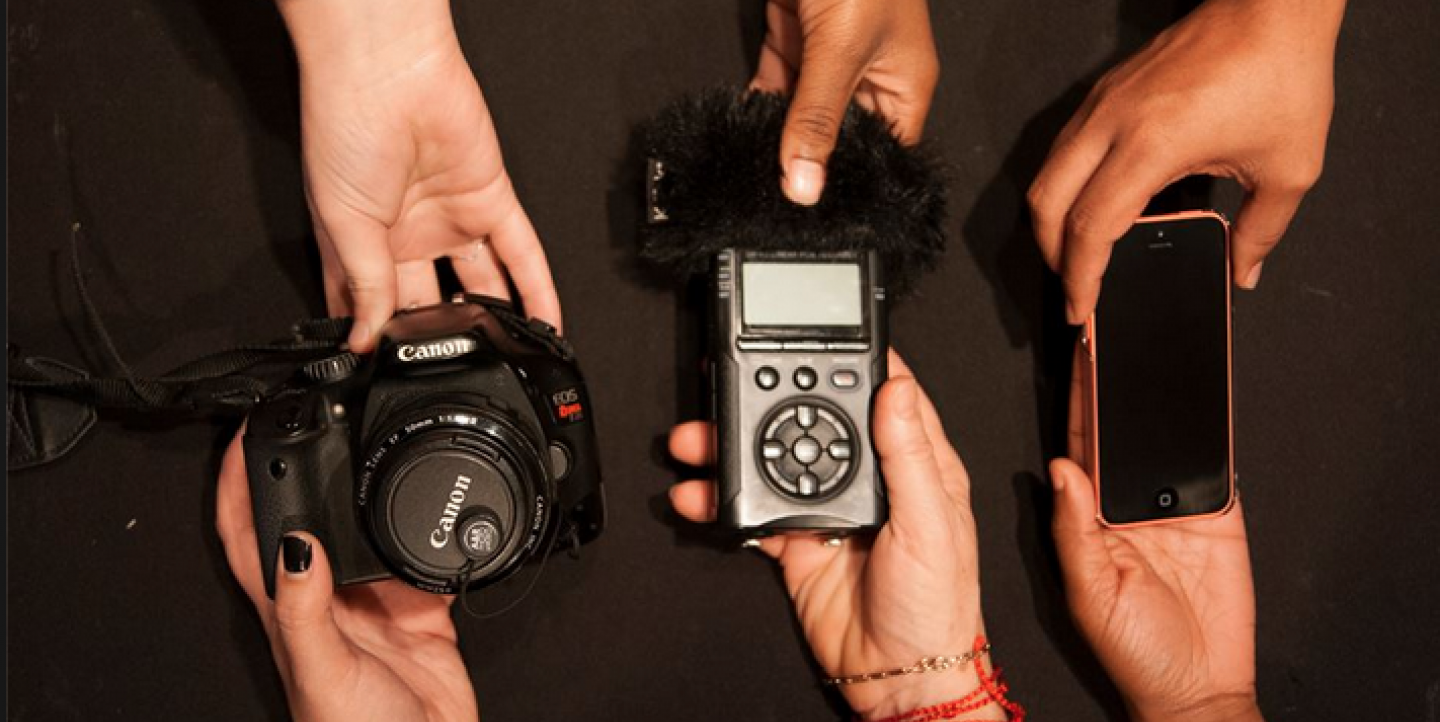Tomorrow morning you plan to visit a neighborhood that lies in the path of a planned airport development. You want to get photos and video of the area and interview residents about how the project will affect them.
What do you do tonight?
a) You think, "Darn, I should have bought that selfie stick so I could tweet pics of myself with all the neighbors!"
b) You download a new app you saw on IJNet, and look forward to trying it out while reporting tomorrow.
c) You check your reporting kit to make sure your devices are charged and that everything is in its place.
If you answered "c," you'll love the checklist below with gear recommendations from media trainers Amara Aguilar and Doug Mitchell. And if you answered anything but "c," you need this checklist.
Mitchell and Aguilar teach aspiring journalists, especially students of color in the U.S., to tell deeply reported, nuanced stories through NPR's Next Generation Radio program, which Mitchell founded in 2000 and still leads.
During their weeklong boot camps, students head out into the field to capture images, sound and text, weave those into multimedia feature pieces, and engage with the public about their reporting. Step 1: Students learn to build and maintain a "go" bag so they're ready to head out and report on a moment's notice, knowing they have what they'll need to get the story.
"I once created a kit with everything I needed and it cost around US$500," Mitchell says. "I'm thinking costs are about the same today plus, you can get a lot of cloud storage for free. Still, it's totally fine if you acquire items gradually or second-hand, or substitute great apps for some of the equipment. For example, if you can't yet afford to invest in a DSLR camera, start with apps that extend the photo and video capabilities of your smartphone."
To find the apps that work best for you, Aguilar, an associate professor of professional practice in digital journalism at USC Annenberg, suggests trying out one new newsgathering app each week. Many apps have a free or “light” version that let you experiment without investing money up front.
When you test it out, "Ask yourself, 'Is it user-friendly and intuitive or a little too clunky?' Don’t test it in the field where time is tighter and the stakes are higher," she says. “Test it with your friends and family. Play around with it a bit, because when you find the right one, it will be useful to you in the field.”
Whatever you put in your mobile reporting kit, Aguilar and Mitchell note, the keys to being prepared are to keep your checklist with your kit, and to repack it and recharge your devices right when you get back from reporting. Don't wait to prepare until just before you leave, they say, because you never know when you may need to run off in a hurry for your next assignment.
Links to recommended apps:
Main image: Photo by Tom Krymkowski for Next Generation Radio and used with permission.



